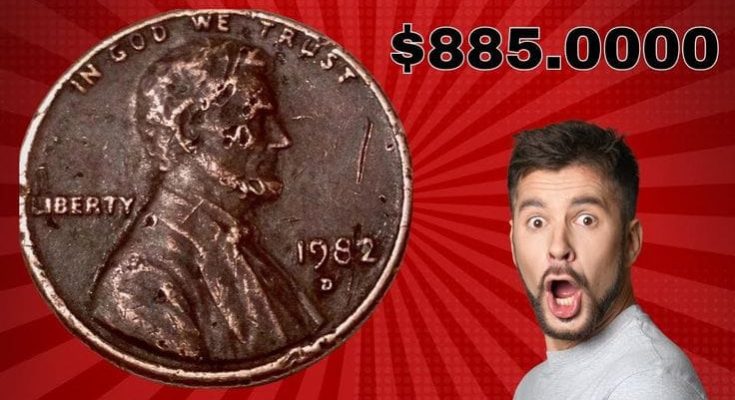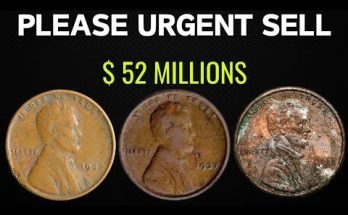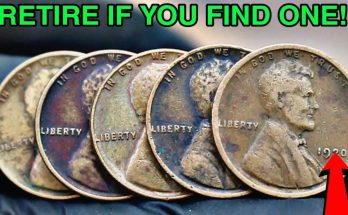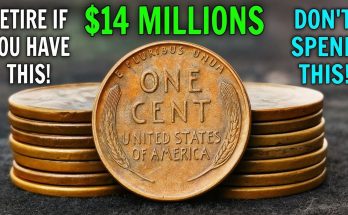The 1982-D Lincoln Memorial Penny
The coin in the photo is a 1982-D Lincoln Memorial Cent, which gets its name from the Lincoln Memorial on its reverse side. The “D” mint mark indicates that it was produced at the Denver Mint.
The year 1982 was a transitional period for the U.S. penny. Up until the middle of that year, pennies were made from a 95% copper alloy. However, due to the rising cost of copper, the U.S. Mint switched to a cheaper composition: a zinc core with a thin copper plating. This makes 1982 a fascinating year for collectors because both compositions were produced for all three mints—Philadelphia (no mint mark), Denver (“D”), and San Francisco (“S”).
The vast majority of 1982 pennies are not particularly valuable. In fact, most are worth only their face value. The sensational claim of a penny being worth “millions of dollars” is typically associated with a specific and extremely rare error coin.
The Myth of the Multi-Million Dollar Penny
The image and caption you provided are characteristic of “clickbait” used to attract views and attention. The claim that a 1982-D penny is worth millions is based on a misunderstanding or exaggeration of a specific error coin.
The coin that can be exceptionally valuable is the 1982-D Small Date Copper Penny. This is a specific variety of the 1982 penny. Most 1982 pennies are “Large Date” coins, where the numbers are bolder and larger. The “Small Date” variety has thinner, smaller numbers.
The true rarity lies in the combination of these two factors:
- Small Date: The date font is thinner.
- Copper Composition: The coin is made of the heavier, 95% copper alloy.
For the Denver Mint (1982-D), a Small Date copper variety is considered rare, as the mint almost exclusively used the new zinc composition for the Small Date coins. The discovery of a genuine 1982-D Small Date copper penny is what can make a coin valuable, potentially fetching thousands of dollars, not millions.
The caption’s claim of a coin being a “USA error penny” is also misleading. The existence of a 1982-D Small Date copper penny is a die variety, not an error. A die variety is a slight difference in the design or minting process, while an error is a mistake that happens during production (like a double strike or an off-center strike).
Verifying a 1982-D Small Date Copper Penny
To determine if a 1982-D penny is the valuable copper variety, you need to check two things:
- The Date: Compare the “2” and the “8” in the date to a known example of a Small Date. The numbers on a Small Date penny are thinner and less defined.
- The Composition: This is the most reliable way to tell. A copper penny weighs approximately 3.11 grams, while a zinc penny weighs about 2.5 grams. You can use a digital scale to check the weight. Another quick, non-destructive test is the “drop test.” A copper penny makes a high-pitched “ping” sound when dropped on a hard surface, while a zinc penny makes a dull “clink.”
Conclusion
While the image and its caption are highly exaggerated, they point to a real, albeit rare, coin variety. The 1982-D Small Date copper penny is a legitimate find that could be worth a significant amount to a collector. However, the value is not “millions of dollars,” and you should be wary of captions that use such sensational claims to generate interest.
If you have a 1982 penny and are curious about its value, the best course of action is to carefully examine the date and, most importantly, weigh the coin to determine its composition. It’s a fun and educational way to learn about a unique period in U.S. coinage.



